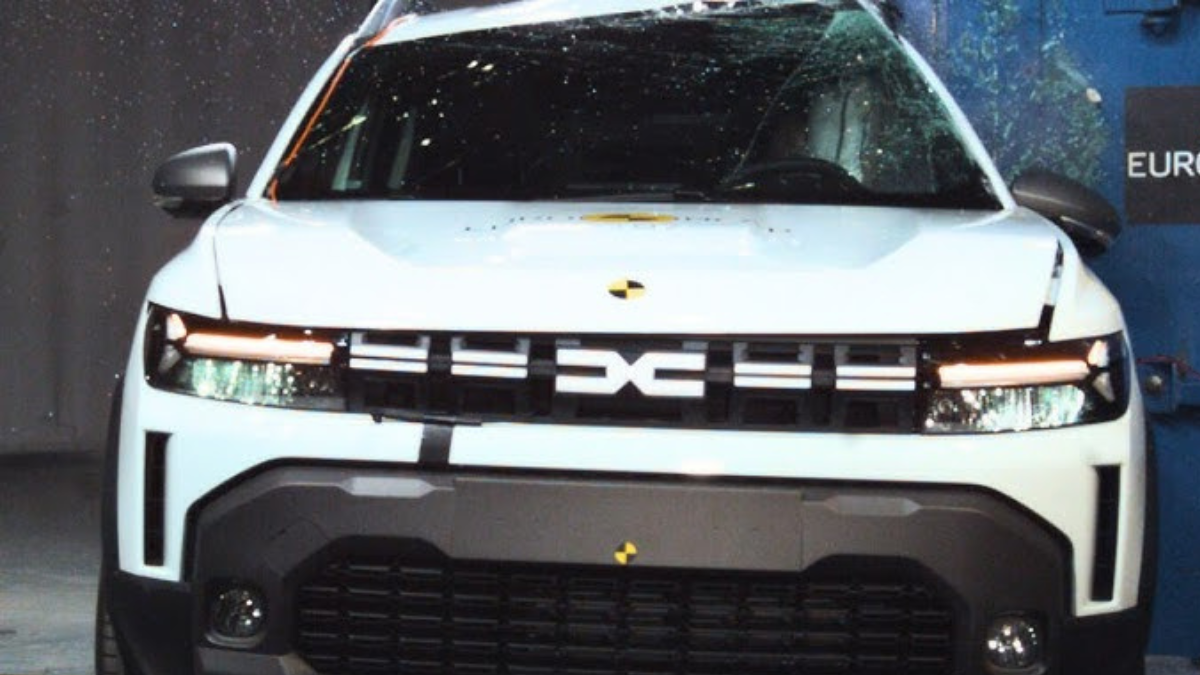Renault’s latest 7-seater Duster has undergone Euro NCAP testing and earned a 3-star safety rating. While this confirms the vehicle meets essential safety requirements in Europe, it also reveals areas that need improvement. For families and daily commuters considering the Duster, this breakdown explains what that score really means.

Renault Duster 7-Seater Safety Rated
| Category | Details |
|---|---|
| Model Tested | Renault Duster 7-Seater (2025 EU Version) |
| Euro NCAP Rating | ★★★ (3 Stars) |
| Adult Occupant Safety | 70% |
| Child Occupant Safety | 72% |
| Pedestrian Protection | 57% |
| Safety Assist Features | 55% |
Key Notes:
-
Solid cabin structure, but weak chest and rear-row protection
-
Rear seating lacks airbag coverage
-
Poor pedestrian impact performance
-
Limited driver-assist technology
Understanding the 3-Star Rating
A 3-star Euro NCAP rating means the Duster meets minimum legal safety standards but lacks the refinement and features of 4- and 5-star competitors. It does not make the vehicle unsafe, but it indicates that Renault made trade-offs in key areas like passenger protection, rear seating safety, and assistance systems.
The cabin stayed stable in frontal crash tests, which is a good sign. However, chest protection for the driver was marginal, and the third-row seats were more exposed due to lack of curtain airbags. The missing center airbag also counted against the vehicle in side impact tests.
Adult Occupant Safety
With a 70% score, the Duster provides reasonable but not class-leading protection for adults. In frontal offset crashes, the passenger area performed adequately, but weak driver chest protection hurt the score. The structure around the footwell and door frames showed some deformation under pressure.
Rear-seat safety is basic, with no adaptive restraints and fixed headrests that limit whiplash protection. Overall, it’s a step up from earlier models but still behind the curve.
Child Safety
At 72%, the Duster shows moderate success in protecting child passengers. It scored well in crash simulations involving dummies the size of 6- and 10-year-olds when seated in the second row using Isofix-compatible restraints. However, the lack of Isofix in the third row and unclear installation instructions reduced the usability score.
Families should note: the third row is not suitable for young children in car seats.
Pedestrian Protection
Scoring only 57%, this is where the Duster falls shortest. The vehicle’s front design doesn’t soften impact well, particularly at the edge of the bonnet and around the windscreen pillars. Autonomous emergency braking for pedestrians is available in some trims, but testing revealed slow and inconsistent performance.
In busy environments with frequent pedestrian contact—like cities—this could be a dealbreaker.
Safety Assist Technology
With a score of 55%, the Duster includes only essential safety assist systems. It comes with ESC, basic seatbelt alerts, and a manual speed limiter. Missing are now-standard features like lane-keeping assist, blind-spot monitoring, and driver fatigue detection. Even when fitted, the AEB system underperformed in several test cases.
This puts the Duster behind nearly every other mainstream SUV released in 2025.
Third Row and Structural Issues
The addition of the third row alters the Duster’s crash behavior. Rear passengers lack sufficient legroom and have no airbag coverage. In side collisions, they are more exposed due to the absence of curtain airbags and crumple zones. During frontal crashes, deformation was observed in the A-pillar and lower structure, suggesting lighter construction materials were used to reduce cost and weight.
Is the Duster Still Worth It?
If your focus is affordability and practicality for short-distance travel, the Duster remains a workable option. It’s competitively priced, fuel-efficient, and offers extra seating in a compact footprint. But for families prioritizing safety, particularly on highways or with kids in the third row, better options exist at similar prices. Renault will need a more advanced safety package to stay competitive in safety-conscious regions.
FAQs
Is the Renault Duster 7-seater safe for family use?
It meets the minimum safety standards but does not provide full protection in the third row and lacks many advanced safety features. Use with caution for long trips or highway driving.
Does it include modern driver-assist features?
Only the basics. It lacks common systems like lane assist and blind-spot detection unless added through higher trims or optional packs.
Can child seats be used in the third row?
No. The third row lacks proper child seat anchors (Isofix), making it unsuitable for safe installation.
How does it compare to 5-star SUVs?
The Duster offers less protection overall and fewer technology features. Many competitors now include full airbag coverage, better materials, and advanced emergency systems.
Will the 3-star rating impact resale value?
Yes, especially in regions where buyers or insurance companies prioritize safety ratings. It may affect demand and insurance premiums.
Click here to know more